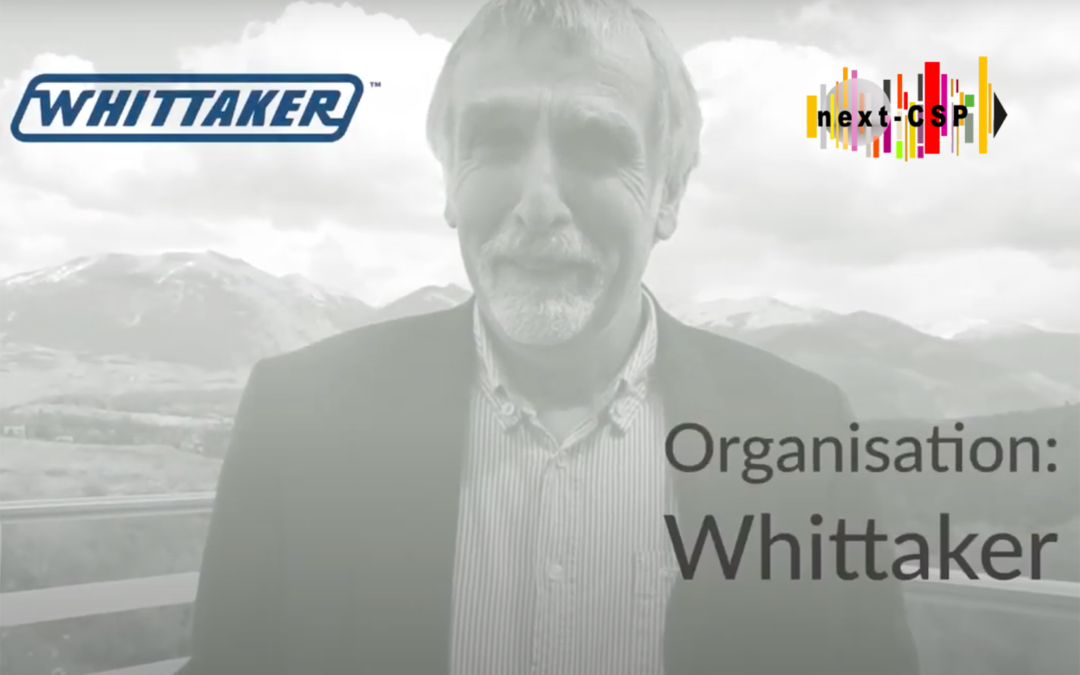Discover the people behind Next-CSP in our interview series in video! This time, meet Ken Whittaker from Whittaker Engineering (United Kingdom) who answered 6 questions about his role in the project, the challenges and the next steps.
You can also find all the partners interviews in the Communication materials section of the Next-CSP website.
Can you tell us a bit about yourself?
Hi, I’m Ken Whittaker and I’m 66 years old. I started work in Stonehaven and I’ve run my own business for 35 years. My wife and I started mainly in offshore oil industry and we’ve been working in that ever since although we have diversified into renewable power supplies in the last few years.
What’s your role in the Next-CSP project?
Our role in the Next-CSP project is designing and manufacturing all component parts of the project which means the design of the following parts: the dispenser, the 40 vertical tubes with fin sections inside, at the top we have the hot store, the hot heat exchanger the cold store, an elevator… All these things will be manufactured in Stonehaven and transported to Font-Romeu for installation.
Why did you decide to take part in the project?
I took part in this project because I’m friends with Jan Baeyens of Leuven University. We’d been working on a fluidized bed project ourselves and once we got talking, he realised we could possibly work together. He asked if we would like to join the Horizon 2020 project. I was very pleased to accept because I’d never worked on a project like this before. It has good prestige and some quite famous partners, so the answer was yes.
What are the most challenging aspects of your tasks?
There were quite a lot of challenging aspects, mostly to do with the heat. In the oil industry, we work with quite high pressures and a lot of corrosion. Neither applied here. In this case it was extreme heat. And the materials generally of use are approaching their maximum capabilities at this heat. The engineering became very difficult because they were particularly weak at these temperatures. So it involved a lot of difficult analysis with no real reference for some of the things we were doing. In fact, we had to invent new ways of making particular manufactured components, for example heat exchangers. It’s our job to make these job a success. We can’t not make it succeed.
What have you achieved so far?
With skillful engineers, a lot of hard work, patience and fast computers we have, as far as we can see, overcome the difficulties. And, as far as our part of the project goes, it should be successful. There have been successes in the project so far. The main difficulty was getting the heat from the sun into the cristobalite and up the 40 vertical tubes. And we did this. We haven’t seen this before, so it may be our invention. Maybe it is… And we’ve put internal fins up the tubes: they conduct the heat from the sun into the fluidized cristobalite going up the tubes. That has been a success. It has been trialled by the CNRS in a single tube and it worked so it should work okay in the 40. The other success was the big hot air heat exchanger which was very hot. Even very thick materials were distorting under the heat, so we had a very novel idea of supporting called the “tube sheets” which hold the tubes at the end. The heat exchanger is very big, it has 1400 tubes, a very difficult thing to make, but so far so good.
What should be the next step after the end of the project?
This is a difficult question. We will always be here to support the project by telephone or email. But we don’t know the position of the UK and the EU and if we’re out of the EU we can’t participate in a similar extension to this project. Of course, we hope we’re going to be in the EU but it’s not within our control.

